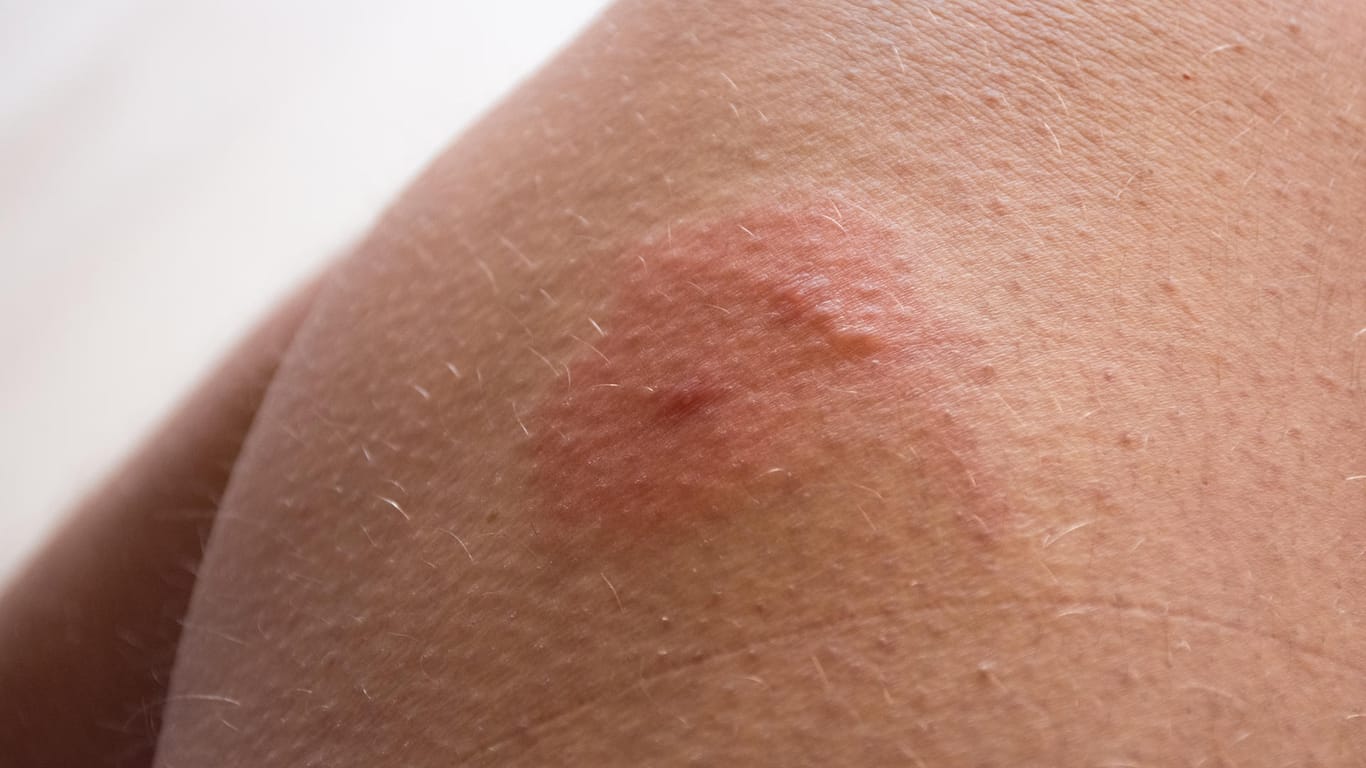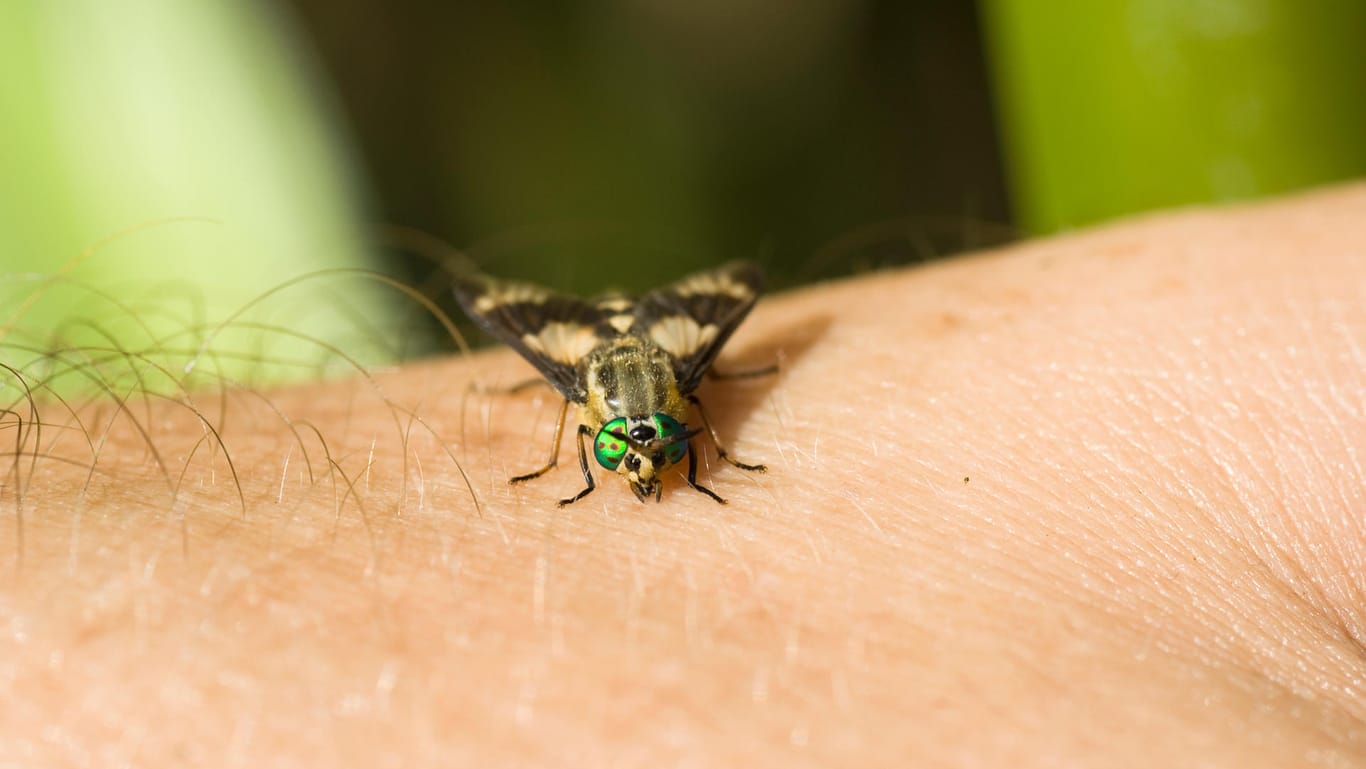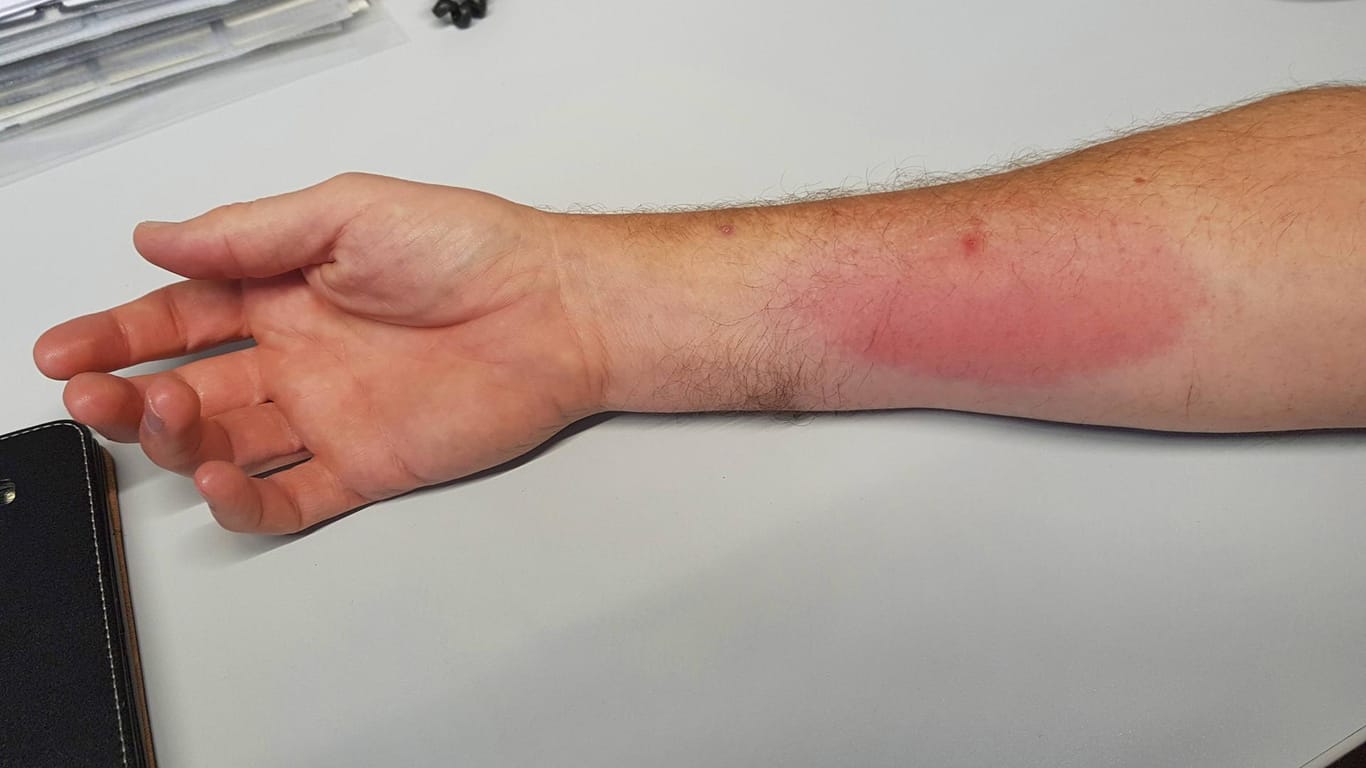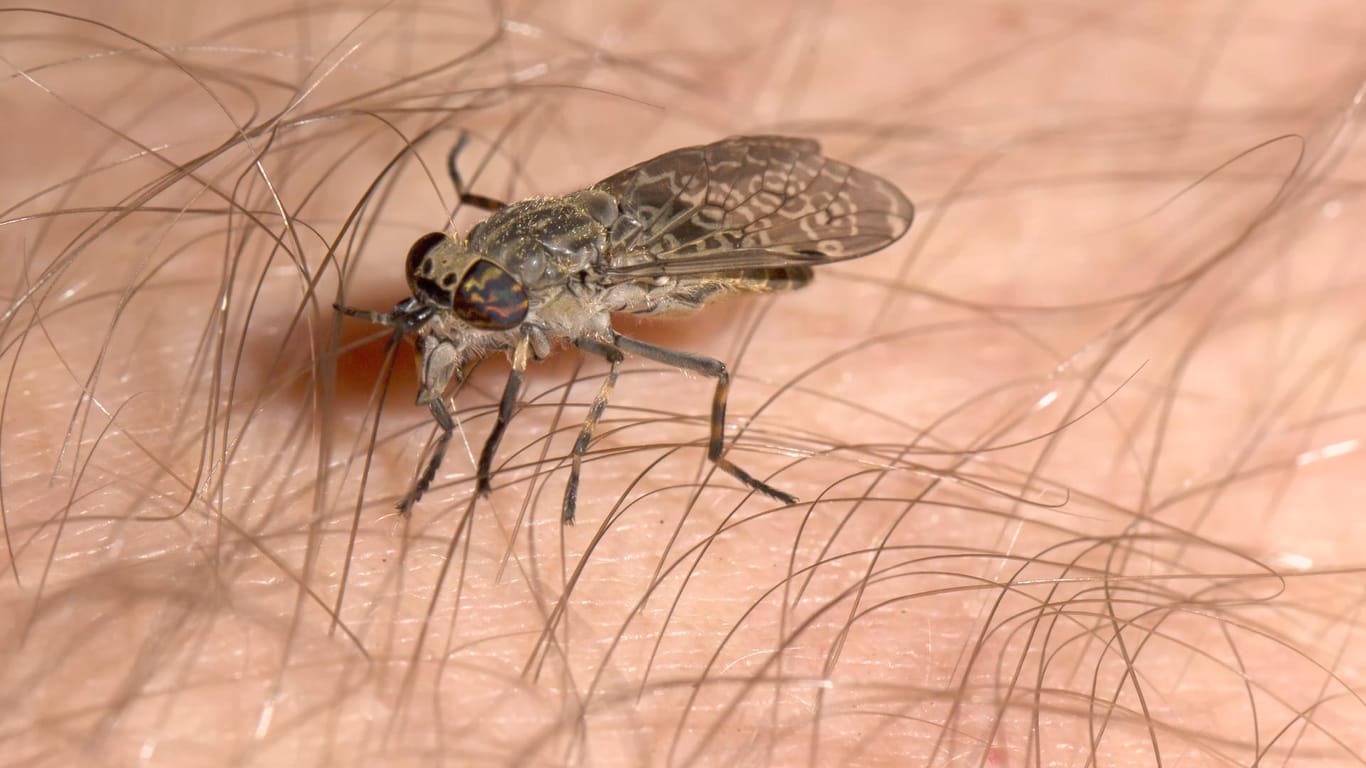When it comes to bloodsuckers, we don’t speak of a horsefly bite, but rather a horsefly sting . The females sting both animals and humans, while the males only feed on nectar and pollen.
Horsefly sting: Beware of inflammation
When a horsefly bites, those affected notice it immediately – unlike a mosquito bite . The sting of the horsefly is extremely painful and clearly felt. This is because the bloodsuckers saw through the skin of their victims with their mouthparts, creating a “lake of blood” which they then suck up. Since horseflies inject an anticoagulant secretion, the relatively large wound can continue to bleed even after the bite.
The sting of a horsefly causes severe itching, which is why many sufferers scratch the puncture site. But you should definitely avoid this. Otherwise there is a risk that the bite will become infected because bacteria and pathogens get into the blood. If the bite has already become infected, go to the doctor, as treatment with antibiotics may make sense in this case.
Symptoms: swelling and itching
The effects of a horsefly sting are felt much longer than those of other insect stings. Typical symptoms are:

- Pain at the injection site
- Redness
- severe itching
- Bleeding of the wound
- severe swelling
- hives
If you don’t treat the bite properly right away, it can take up to two weeks for the wound to heal completely.
How to properly treat a horsefly sting

You can recognize a horsefly bite because the bloodsucker is usually still sitting on the wound, as horseflies are extremely difficult to drive away. If you have been stung by a horsefly, here’s what you should do:
- Treat the sting with heat first. This can relieve pain and itching. To do this, carefully place a warm washcloth on the stitch. Make sure it isn’t too hot so you don’t burn yourself. The horsefly secretion can be destroyed by heat and the symptoms can be alleviated.
- Just don’t scratch. Even if the onset of pain and itching tempts you to do so, you should definitely refrain from scratching the puncture site. Otherwise, pathogens from your hands can easily penetrate the wound.
- Afterwards, cool the sting. Use ice cubes or cooling pads to counteract the swelling and relieve the pain. Ointments and cooling gels that are applied to the puncture site also have the same effect.
Home remedies for horsefly stings
If you are out and about and don’t have a cooling pad or ointment to hand, simply rub the affected area of skin with spit as a first countermeasure. The saliva can relieve some of the pain and swelling.
A cold vinegar compress on the affected area of skin can also be helpful, as can a halved onion. Its juice has an anti-inflammatory effect.
Since heat destroys the active ingredients of the secretion that the horseflies release, you can also use this home remedy : hold a tea or coffee spoon under hot water. But make sure it doesn’t get too hot so you don’t burn yourself. Press the spoon firmly on the sting and repeat until you feel relief.
Allergy and diseases

If you experience particularly large swelling, you should get checked for an allergy. The following symptoms can occur in people with an allergy to insect venom:
Swelling not just at the injection site
States of shock
Shortness of breath
chills
Hot flashes
If you notice these signs, you should immediately consult a doctor or call the emergency doctor on 112. If the allergy is known, those affected should always carry an emergency kit with them.
In most cases, horsefly stings are unpleasant but harmless to health. However, they can sometimes transmit diseases – including Lyme disease or anthrax.
How to protect yourself from horsefly bites
Bloodsuckers in the wild: The rainfly is the most common horsefly in Germany and is active from May to September.
Enlarge the image
Bloodsuckers in the wild: The rainfly is the most common horsefly in Germany and is active from May to September. (Source: imago/imagebroker)
Horseflies are particularly active on humid days in the summer months near meadows and wetlands. The bloodsuckers also like to be around horses and other large farm animals.They are attracted by sweat and visual movement, and are also persistent and goal-oriented. They like to attack people near lakes or outdoor pools and can pursue their victims over long distances, such as joggers or cyclists.The best protection against horseflies is clothing with long sleeves and pants. However, the material must not be too thin, as horseflies can pierce through light materials. It is therefore advisable to apply additional skin protection in the form of insect sprays or lotions.

